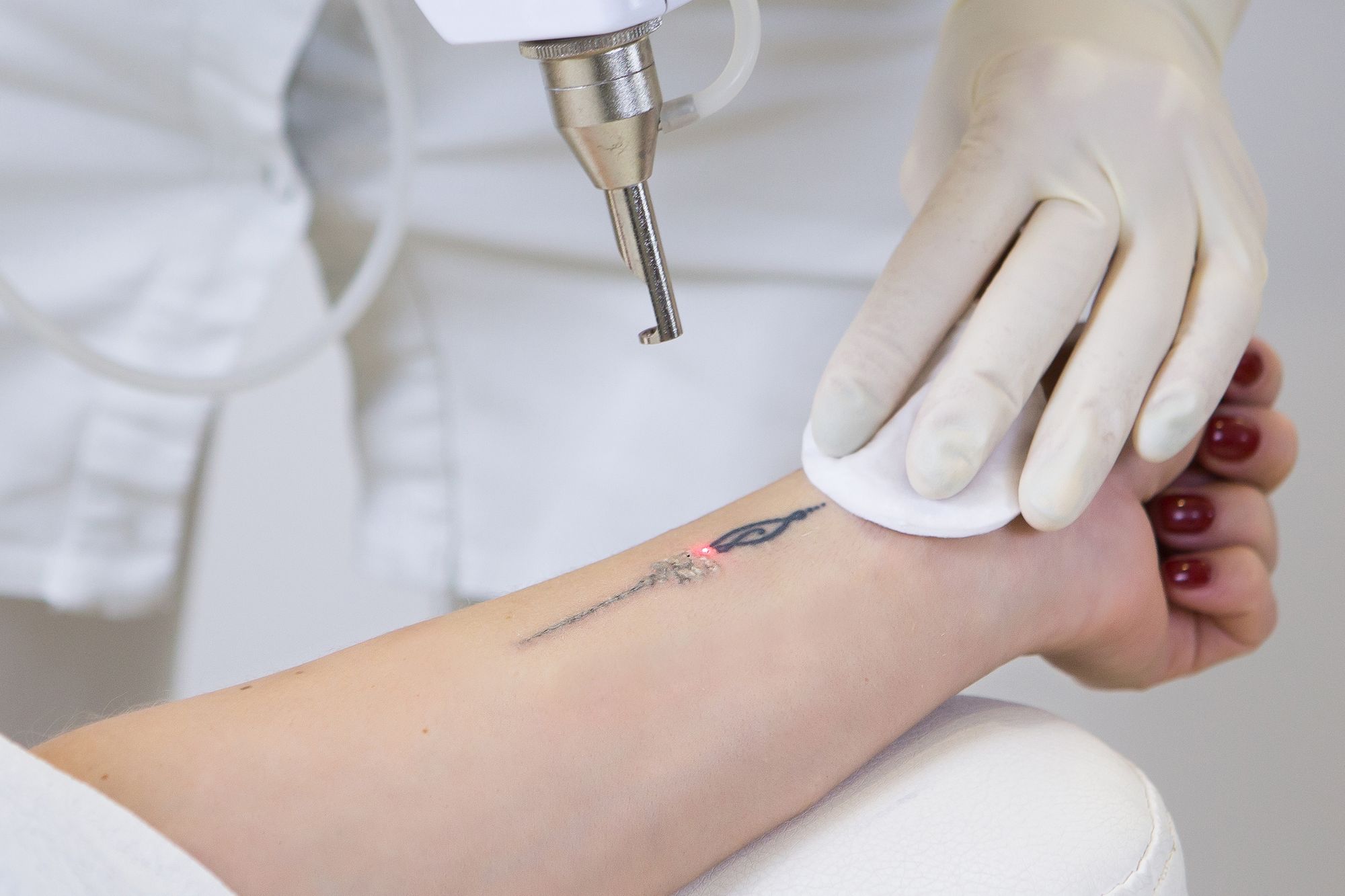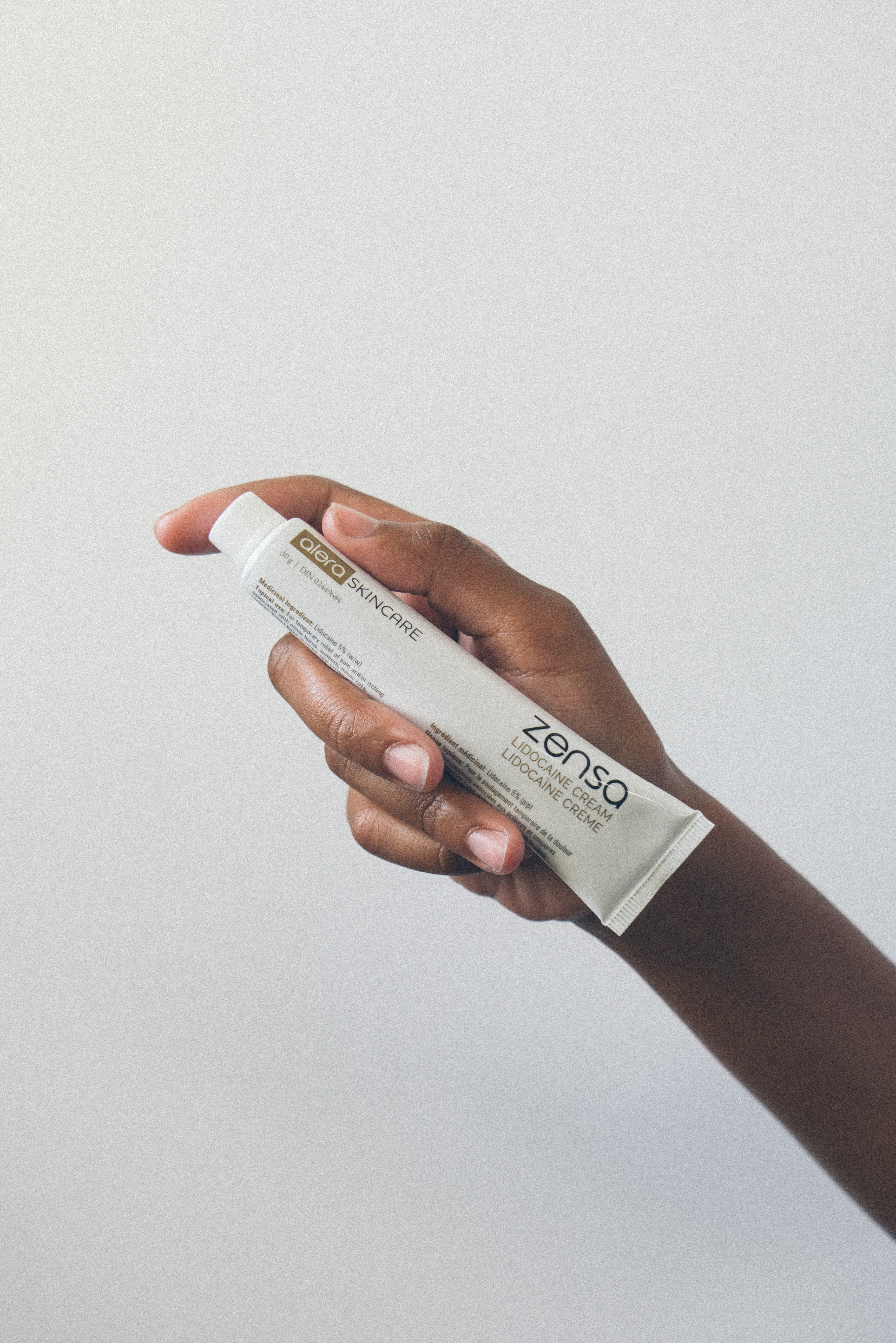Erasing the Past: A Guide to the Tattoo Removal Process
Erasing the Past: A Guide to the Tattoo Removal Process
Tattoos have become increasingly popular in recent years, with more people than ever before getting inked. While tattoos can be a great way to express oneself, they can also be a source of regret for some. Whether it’s due to changing tastes or personal circumstances, many people eventually find themselves wishing they could remove their tattoos.
In short, the tattoo removal process works either by eliminating the ink-stained skin or by breaking up the tattoo ink into smaller particles that are then expelled from the body naturally. It’s notorious for being painful, and depending on the complexity of the piece — its size, color, location, and age — tattoo removal can also include a lengthy healing process that can take weeks or even months. But don’t worry! Post-care products like Zensa Healing Cream work in your favor to minimize irritation and promote easy recovery until you’re fully healed.
Fortunately, there are several options for tattoo removal that can help people get rid of their unwanted ink. In this article, we’ll prepare you for what to expect from the tattoo removal process and the healing journey afterward.
So, if you’re ready to say goodbye to your old tattoo and start fresh, here’s all the information you need to take the next step.

Types of Removal
As tattoo removal has become increasingly popular, a variety of distinct techniques have been developed to suit each person’s needs, each with its own benefits and drawbacks. The most common method is laser removal, but dermabrasion, excision, chemical peel, and cryosurgery are non-laser alternatives.
Laser Treatment
Laser tattoo removal is the most popular and effective method for tattoo removal. As its name suggests, this procedure uses high-intensity laser technology to dissolve the pigment into particles that are small enough for the body to eliminate through its regular functions. Laser tattoo removal is typically completed in multiple sessions over the course of months. The number of required treatment sessions depends on the size, age, location, and color of the tattoo.
Although the success of laser treatment has the highest rate of success relative to other solutions, the process can be painful and should always be performed by a certified professional. As with any medical procedure, it is important to discuss this method with a doctor beforehand to ensure the best results.
Non-Laser Alternatives
If you’re looking for an alternative to laser tattoo removal, there are a few options out there that may remove or fade your tattoos, including dermabrasion, surgical excision, chemical peels, and cryotherapy.
Dermabrasion uses an abrasive rotary tool to sand down the top layers of the skin and the ink within them. This technique is typically used for smaller tattoos or tattoos that require removal in one session. Due to the nature of the process, dermabrasion is known to be very painful and can leave scarring, making it less popular than laser removal.
Excision is a more invasive method for tattoo removal that involves surgically cutting out the tattooed skin and stitching the incision back together. This technique, which is technically plastic surgery, is typically used for smaller tattoos and is not recommended for larger tattoos or those located in sensitive areas. Like dermabrasion, surgical excision can require a long recovery period and can leave scarring.
Chemical peels and cryosurgery are two other options that work in a similar way to laser tattoo removal. The former utilizes chemicals, and the latter freezes the skin to break down the pigment for the body to remove naturally.
Regardless of the method used, tattoo removal is a process that requires careful consideration and preparation. Before undergoing tattoo removal, it’s important to research the different methods available and choose a qualified professional with experience in the specific technique you’re interested in. Additionally, it’s important to understand the potential risks and side effects associated with each method, as well as the expected results.

How to Evade Tattoo Removal Pain
Zensa Numbing Cream is a vegan, cruelty-free local anesthetic designed to numb the skin before painful procedures like tattoo removal. Utilizing 5% lidocaine, Zensa Numbing Cream penetrates the skin to provide a temporary numbness that lasts from two to three hours. It also includes anti-inflammatory ingredients like Vitamin E to speed up the healing process.
For those looking for an alternative to synthetics, Zensa Numbing Cream is the most natural topical numbing cream available on the market. With its targeted ability and natural ingredients, Zensa Numbing Cream is the perfect choice for those looking to significantly reduce the pain associated with tattoo removal.
Aftercare
Tattoo removal treatment is no joke, and it will likely cause your skin to be sensitive and tender. Aftercare is a critical part of the process. Taking time out to heal and properly caring for your skin can make the difference between a successful tattoo removal and a regrettable one.
After undergoing tattoo removal, it’s important to take care of the skin to ensure proper healing and minimize the risk of infection. This may include applying topical creams or ointments like Zensa Healing Cream, avoiding exposure to sunlight or other sources of UV radiation, and following any other instructions provided by the tattoo removal professional for your particular case. Lastly, be sure to follow up to ensure the treatment is progressing as expected.

All in All
Tattoo removal can feel like a difficult process to undertake, but with pre-care preparation and the help of an expert, it can be a rewarding experience that can drastically change your life. With a wide range of treatments available, everyone can find a method that suits their lifestyle and their budget — and with the right attitude, the removal of a tattoo can be a positive step toward achieving a desired look. Once you’ve completed your treatment, don’t forget to promote your speedy recovery with topical ointments like the Zensa Healing Cream, which is formulated with medicinal-grade and natural ingredients, so you can sooner get back to living the life you choose.
So, if you’re considering having an unwanted tattoo removed, take the time to research potential providers and make an informed decision — after all, it’s a body modification, and you deserve to be in control of how you look.
